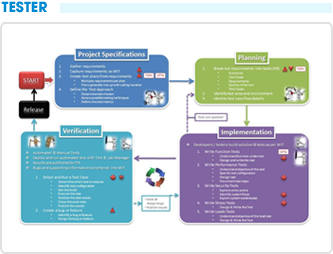024 38560777
Division (Toán tử chia (a/b))
Trong toán học, đặc biệt là trong số học sơ cấp, phép chia (÷) là một phép toán số học. Cụ thể, nếu b nhân c bằng a, viết là:
a = b × c
trong đó b không phải là số không, thì a chia b bằng c, viết là:
a ÷ b = c
Ví dụ,
6 ÷ 3 = 2
bởi vì
3 x 2 = 6
Trong biểu thức trên, a gọi là số bị chia, b là số chia và c gọi là thương.
Khái niệm phép chia có liên quan đến khái niệm phân số. Không giống như phép cộng, phép trừ và phép nhân, tập hợp số nguyên không đóng trên phép chia. Kết quả của phép chia hai số nguyên có thể trả về phần dư. Để tiếp tục thực hiện phép chia cho phần dư, hệ thống số cần được mở rộng thêm với phân số hoặc số hữu tỉ.
By English
In mathematics, especially in elementary arithmetic, division (÷) is an arithmetic operation. Specifically, if b times c equals a, written:
a = b × c
where b is not zero, then a divided by b equals c, written:
a ÷ b = c
For instance,
6 ÷ 3 = 2
since
3 x 2 = 6
In the expression a ÷ b = c, a is called the dividend or numerator, b the divisor or denominator and the result c is called the quotient.
Conceptually, division describes two distinct but related settings. Partitioning involves taking a set of size a and forming b groups that are equal in size. The size of each group formed, c, is the quotient of a and b. Quotative division involves taking a set of size a and forming groups of size c. The number of groups of this size that can be formed, b, is the quotient of a and c.
Teaching division usually leads to the concept of fractions being introduced to students. Unlike addition, subtraction, and multiplication, the set of all integers is not closed under division. Dividing two integers may result in a remainder. To complete the division of the remainder, the number system is extended to include fractions or rational numbers as they are more generally called.
Like Doanh nhân số







































